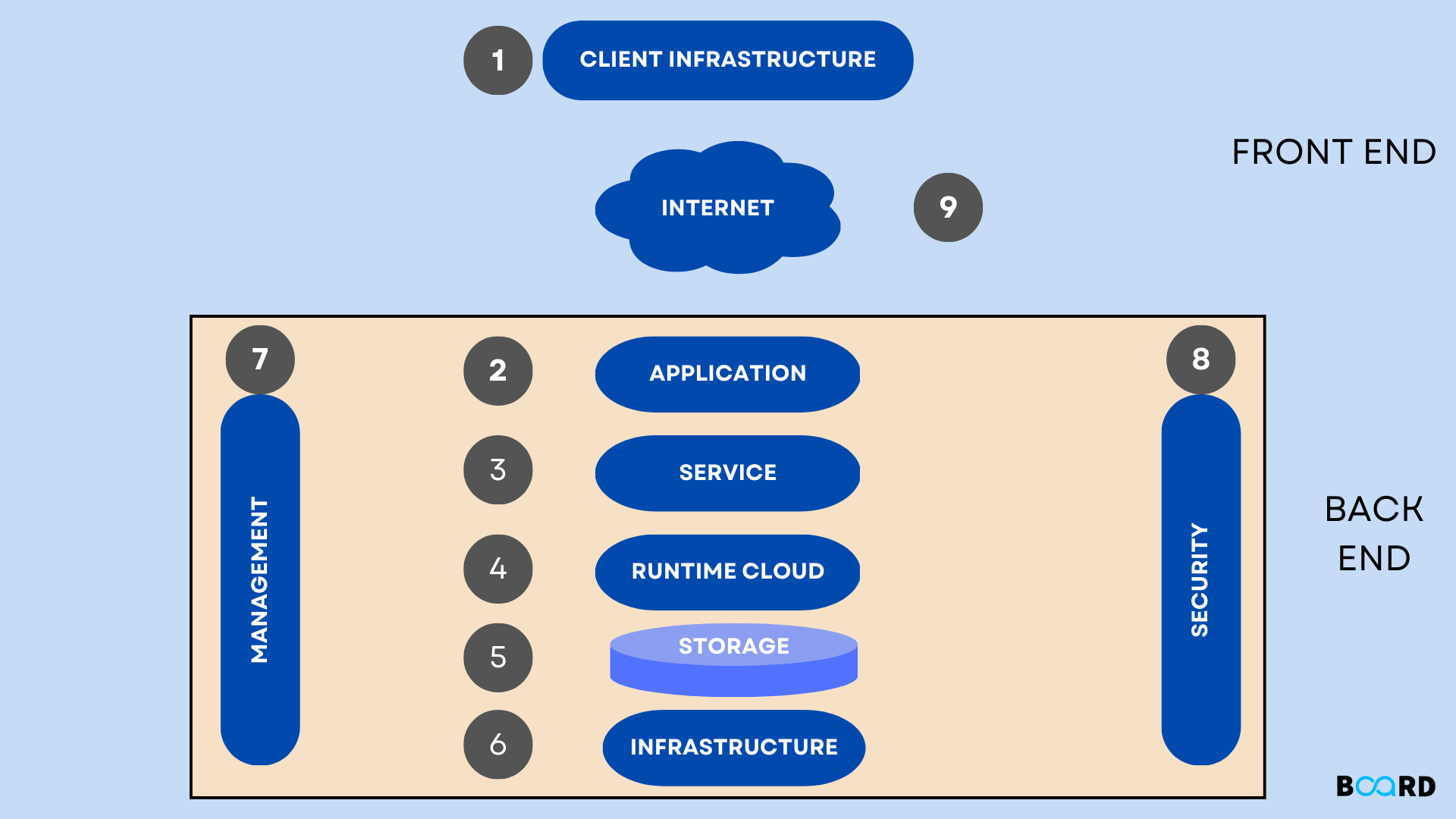Cloud Computing Fundamentals: Introduction and Core Principles
Learn about Cloud Computing Architecture

Introduction
The frontend and backend are the two core elements of the cloud computing architecture. In this design, the frontend acts as the client and connects with the backend across a network or the internet. The client-side, or front end, of the cloud computing architecture is what the user can see. Through the middleware, the frontend communicates requests to the backend. The backend responds to the frontend's inquiries and safeguards the data.
Backend-as-a-service, or BaaS, is the name of the whole cloud service delivery paradigm. Finding the appropriate hardware and software components that make up the entire cloud environment is crucial in a commercial context. While you can select off-the-shelf hardware and software based on your budget and business needs, The top cloud service providers provide a complete set of matched hardware and software. Choosing the right cloud software architecture for your company is one of the most crucial business choices if you intend to migrate to the cloud. A poorly planned cloud computing architecture might result in low cost-effectiveness and zero scalability. You can manage all the software and hardware components with the right cloud computing architecture.
Components of Cloud Computing Architecture
The following are the fundamental elements of the cloud computing architecture:
- Front-end platform
- Back-end platform
- Cloud-based delivery
In addition to the front-end and back-end platforms, cloud-based delivery enables information transmission through a variety of cloud infrastructures, including infrastructure-as-a-service (IaaS), platform-as-a-service (PaaS), and software-as-a-service.
Front End Cloud Architecture?
Everything the end user interacts with is part of the front end infrastructure. The user interface is made up of a number of smaller components that have been combined. Additionally, it plays a crucial role in the end user's connection to the cloud computing infrastructure. Web applications, local networks, and web browsers are included in the front-end cloud infrastructure. These are the primary front-end cloud components:
- User Interface: All the components that the end user uses to send requests or carry out any task on the Cloud are referred to as the user interface. Google Doc, Gmail, and other well-known cloud-based user interfaces are a few examples.
- Software: The software that users use runs on the front end's software architecture. Client-side software applications or browsers make up the majority of frontend software architecture.
- Client Device or Network: The program that users utilize runs on the front end's software architecture. Client-side software programs or browsers make up the majority of the frontend software architecture.
Back End Cloud Architecture
The frontend architecture is strengthened by the cloud's backend architecture. It consists of storage and hardware, both of which are housed on a distant server. This backend cloud architecture is managed and controlled by the cloud service provider. A stable backend cloud architecture is always ideal because it supports the entire cloud infrastructure. The following are the main elements of backend cloud architecture:
- Application: The backend architecture includes the application in large measure. It refers to the user interface for sending queries that the backend offers to the user. This layer of the backend deals with the requests and requirements of the client.
- Service: In the backend cloud architecture, this is a magical section. The entire backend design gains usefulness as a result. Each task that is performed using the cloud computing system is handled by the service. Web services, storage, and application development environments are some of the cloud services. Additionally, services may carry out a huge variety of operations in the cloud.
- Cloud Runtime: The idea of where the services are run is referred to as "Cloud Runtime." Similar to a cloud operating system, it makes use of virtualization technologies. A crucial cloud technology that enables various runtimes on one server is virtualization. For instance, virtualization enables us to build a software foundation. It may be described as the digital representation of networks, servers, storage, and applications. "Hypervisors" are what we use to build runtimes with the aid of virtualization software. The top hypervisors include VMware Fusion, Oracle Virtual Box, and Oracle VM for x86.
- Storage: The location of a cloud application's data on the cloud is storage. Depending on the various cloud services offered, varying amounts of data are stored. However, they all have a specific area set up for cloud storage. Hard drives, solid-state drives, Intel Optane DC Persistent Storage, and others are some forms of storage. The capacity in the cloud backend architecture is made up of the hard drives in the server bays. The software divides the discs in a cloud computing system, in particular, in accordance with the requirements of the OS to execute a variety of services.
- Infrastructure: Infrastructure refers to the driving force behind all cloud software services. It consists of the CPU, motherboard, GPU, network cards, accelerator cards, etc. The client workloads are a constant determinant of the infrastructure model.
- Management: The management software is in charge of ensuring that every cloud environment runs without a hitch by allocating particular resources to particular tasks. In a cloud computing system, management, also known as "middleware," acts as a coordinator between the frontend and backend architectures.
- Security: Any cloud computing architecture must have security as a fundamental and essential component. We design security architecture while keeping in mind the debugging procedure. If there is a problem, debugging should be simple. The initial step in ensuring security in a cloud computing system is routine storage backup. Other essential components of the cloud security infrastructure include virtual firewalls.
